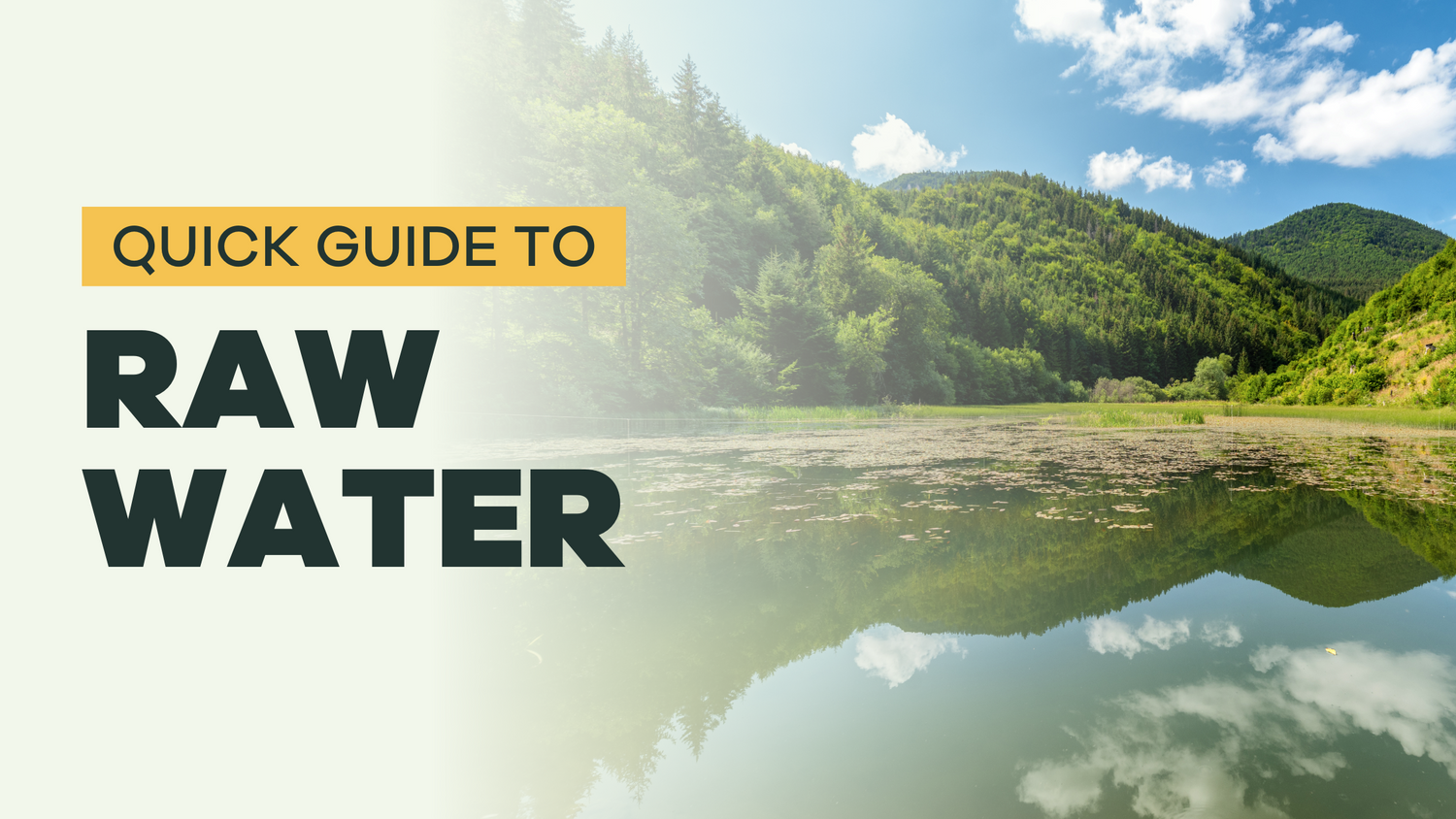Is Raw Water Safe to Drink?
Our blog is written by real experts— not AI. Each guide is carefully reviewed and updated based on the latest research. Plus, with no affiliate links, you can count on unbiased insights you can trust.
What is “raw water” and is it safe to drink? While the benefits of drinking raw water have been praised by the health-obsessed, raw water is nothing but untreated water found in the environment— this includes rainwater, spring water, and groundwater.
There is no shortcut to “pure” water. In this short breakdown, we explain why it’s a good idea to test raw water before consuming it. Laboratory water testing allows you to override the fads and decide for yourself.
Key Takeaways
- Raw water is untreated ground or surface water— which includes rainwater and spring water
- Raw water can contain anything from beneficial minerals like calcium and magnesium, to pathogenic microorganisms like fecal coliform bacteria and parasites, as well as chemical contaminants from human activity (cities, industry, agriculture nearby)
- Some wells and springs produce fantastic water, but you will need to test it to find out; you will also need to test regularly to ensure this is the case over time
What is Raw Water?
Raw water is untreated ground or surface water— which includes rainwater and spring water. Sometimes, this untreated water is bottled and sold as a healthier, safer alternative to conventional tap and bottled water. There is no evidence to suggest that unfiltered or untreated water contains health benefits.
What Is in Raw Water?
Raw water can contain any number of the following:
- Minerals including calcium, magnesium, potassium, etc.
- Heavy metals including arsenic, manganese, uranium, etc.
- Bacteria like E. coli and other microorganisms including Giardia and Cryptosporidium
- Particles of clay and silt
- Humic acids and other complex acids produced by plant decay
- Any number of chemical contaminants including pesticides and anything else industrial operations might dump into surrounding waters
Is Spring Water Raw Water?
Yes, spring water that flows naturally from an underground aquifer that is untreated and unfiltered is raw water.
Is Raw Spring Water Safe to Drink?
Not necessarily. Just because the environment you’re in looks pristine enough, contaminants—including fecal contamination—may have entered far upstream, compromising the water. In many cases, the toxic chemicals are naturally occurring; for example, most arsenic in groundwater comes from natural rock formations.
Raw spring water has not had the benefit of water analysis to determine whether or not it’s safe for human consumption. There is nothing inherently “safe” (or “unsafe,” for that matter) about a spring. However, drinking raw water, or more specifically untreated spring water, dramatically increases your chances of developing acute illness from coliform bacteria like E.coli or Campylobacter, or parasites like Giardia or Cryptosporidium.
If you are interested in drinking water from a spring nearby your property, you should test it as you would test water from any other source.
Is Raw Groundwater Safe to Drink?
Like springwater, untreated groundwater is not necessarily safe (or unsafe) for human consumption. Raw groundwater is not likely safe to drink in most areas impacted by human activity (near cities, industry, agriculture) or from aquifers with naturally occurring contaminants.
If you would like to drink unfiltered and untreated groundwater, you should have it tested first. Well water is groundwater accessed from aquifers underneath the earth’s surface.
Is Well Water Raw Water?
Untreated well water is, theoretically, raw water because it is water pumped directly from the ground.
Is Raw Well Water Safe to Drink?
Well water is safe to drink when the well and treatment systems are properly installed and maintained. Even deep wells near populated or industrialized regions are frequently contaminated. One of the most vital aspects of proper well maintenance is regular laboratory water testing.
Well water analysis kits help you better assess how to keep your well water supply free from coliform bacteria, nitrates, arsenic, and other groundwater pollutants. Without treatment, well water carries similar risks as drinking raw spring water, with the added risk of common groundwater contaminants (metals and radiologicals, in particular).
If you are interested in drinking water from a well, you should test it.
Why Testing Your Water Matters
The water you drink will never be a meaningful source of minerals and nutrients compared to the rest of your diet, but it could quite easily make you sick in the short term or have long term health effects. Some wells and springs produce really fantastic water, but that’s only evident after water testing has been performed.
Moreover if you find the water is suitable to drink, you will need to test repeatedly to ensure this is still the case over time, as no treatment of a water source also means no buffer against potentially new contamination issues.
If you live near a spring and want to consider it for your drinking water needs, get it tested:
Note: You should never drink raw water from a drainage canal or any water sources near human development.









